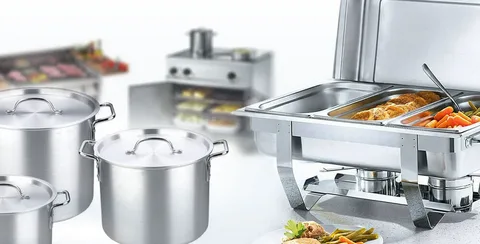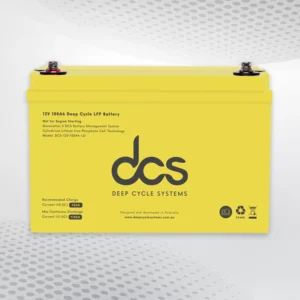Commercial cooking equipment forms the cornerstone of any professional kitchen, facilitating the creation of diverse and high-quality dishes. In professional settings, the choice of equipment can significantly affect efficiency, safety, and overall culinary output. Various types of equipment serve specific purposes, from high-capacity ovens for baking and roasting to specialized fryers for achieving perfect, crispy textures. Refrigeration units, such as walk-in fridges and blast chillers, are equally essential, ensuring ingredients remain fresh and safe to use. By selecting the right combination of equipment, chefs can optimize their workflow, enhance their menu offerings, and maintain the highest food quality and safety standards.
Essential Cooking Equipment for Professional Kitchens
A professional kitchen relies on fundamental tools to ensure smooth operations. Central to these are ranges, ovens, grills, and fryers. Ranges and ovens are indispensable for baking, roasting, and cooking. Grills impart a distinctive flavor to meats and vegetables, enhancing the dining experience. Fryers are vital for creating an array of fried foods, adding variety to the menu. Each type of equipment contributes to the efficiency and quality of the cooking process, enabling chefs to deliver consistent, high-standard dishes while maintaining a well-organized and productive kitchen environment.
Commercial Refrigeration Equipment
Proper refrigeration is essential for upholding food safety standards in a professional kitchen environment. Walk-in refrigerators and freezers offer ample space for storing perishable items, ensuring they remain fresh and safe for culinary use. Blast chillers are pivotal as they swiftly decrease the temperature of hot foods, thereby halting bacterial proliferation and maintaining quality. Investing in superior refrigeration units is indispensable for protecting food safety and boosting kitchen operations. Moreover, modern refrigeration equipment often has energy-efficient features and sophisticated temperature control systems.
These advancements contribute to sustainability and enhance the kitchen space’s overall efficiency and productivity, making them a wise investment for any culinary business. Additionally, integrating such technology can lead to significant cost savings over time, reducing utility expenses while maintaining optimal food safety conditions. This blend of technology and practicality ensures that kitchens can operate smoothly, even during peak times, by consistently delivering top-quality food.
Catering Equipment Supplier
A catering equipment supplier provides a wide range of essential tools and appliances to support the needs of professional kitchens, events, and food service establishments. They offer products such as ovens, refrigeration units, food processors, and serving equipment, ensuring that chefs and caterers have access to reliable and high-quality items. A reputable supplier focuses on quality, durability, and efficiency, offering brands known for their performance. Additionally, they provide expert advice, maintenance services, and flexible purchasing options, catering to various budgetary requirements. By partnering with a dependable supplier, businesses can enhance their operational efficiency and deliver exceptional culinary experiences.
Specialized Commercial Kitchen Equipment
Commercial kitchen equipment, such as steamers, grills, fryers, and sous vide machines, can significantly enhance a kitchen’s cooking capabilities. Steamers are perfect for those prioritising healthy meals, as they preserve the essential vitamins and flavors of vegetables and seafood. Grills enable the searing of meats and vegetables, giving them a distinct taste that’s hard to match through other techniques. Fryers are vital for crafting many fried dishes with a consistently crunchy surface.
Sous vide devices control precise temperature, allowing chefs to cook food evenly and retain moisture. Each specialized tool enables culinary artists to experiment with diverse methods, leading to innovative dishes. Incorporating these gadgets allows professional kitchens to meet a wide array of dietary preferences and culinary desires, ensuring every diner finds something to enjoy.
Cleaning and Maintenance of Cooking Equipment
Cleaning and maintaining cooking equipment is crucial to upholding performance and hygiene standards in a professional kitchen. Begin by consulting the manufacturer’s guidelines for specific cleaning instructions and recommended cleaning agents. Daily cleaning routines should include wiping down surfaces, cleaning grates and filters, and ensuring that all detachable parts are thoroughly sanitized.
Schedule regular intervals to dismantle equipment and address areas prone to grease buildup and food residues for deeper cleans. Proper maintenance extends beyond cleaning; it involves checking for wear and tear, replacing worn-out components, and ensuring that moving parts are well-lubricated. Training kitchen staff on correct cleaning techniques and the importance of maintenance can significantly reduce the risk of equipment failure and food contamination. Using appropriate cleaning tools and products designed for commercial kitchen use can help maintain the equipment’s longevity and efficiency.
Cost Considerations and Budgeting of Commercial Kitchen Supplies
Creating a financial plan for acquiring commercial kitchen supplies requires a thoughtful method to balance expense and excellence. It’s crucial to thoroughly assess both the immediate requirements and the long-term objectives of your culinary space, ensuring you allocate resources wisely for indispensable devices. Procuring superior-grade equipment might entail a substantial upfront investment, but it frequently compensates through diminished upkeep expenses and increased operational efficiency over time. It will examine the prospective financial benefits of improved workflow and lower energy usage.
In formulating a budget, include projected costs for installation, transportation, and any essential staff instruction. Exploring bulk purchase incentives or financing alternatives can also aid in managing outlays without sacrificing equipment standards. Further, it is wise to stay informed about evolving kitchen technologies and trends that could impact future decisions, ensuring that your choices remain relevant and adaptive to changing culinary landscapes. Engaging with industry professionals or consultants may provide additional insights into optimizing your budget and achieving a sustainable balance between cost and quality.
The Role of Technology in Modern Cooking Equipment
Technology integration in contemporary cooking equipment has revolutionized the professional kitchen landscape. Here are some key advancements:
Smart Ovens
- Programmable Settings: Smart ovens equipped with programmable settings allow chefs to automate cooking processes, ensuring consistency and freeing up time for other tasks.
Induction Cooktops
- Precise Temperature Control: Induction cooktops offer precise temperature control and energy efficiency, significantly reducing cooking times and energy usage compared to traditional gas or electric stoves.
Wi-Fi Connectivity
- Remote Monitoring and Control: Many modern appliances now include Wi-Fi connectivity, enabling remote monitoring and control through mobile apps, which adds convenience and flexibility for busy kitchen staff.
Durable and Easy-to-Clean Equipment
- Enhanced Hygiene and Longevity: Advancements in materials and design have led to the development of more durable and easy-to-clean equipment, enhancing hygiene and longevity.
Energy-Efficient Refrigeration Units
- Advanced Temperature Control Systems: Energy-efficient refrigeration units with advanced temperature control systems help maintain optimal storage conditions while reducing operational costs.
Improving Kitchen Functionality and Efficiency
These technological innovations not only improve the functionality and efficiency of kitchen operations but also contribute to a more sustainable and eco-friendly culinary environment.
Future Possibilities
As technology continues to evolve, the possibilities for further enhancing commercial cooking equipment are virtually limitless, offering new ways to improve kitchen productivity and food quality.
Sourcing and Purchasing Equipment
Sourcing the right commercial cooking equipment involves thorough research and careful consideration of various factors. Start by identifying your kitchen’s needs and creating a list of required equipment—research different brands and models, paying close attention to reviews and feedback from other professional kitchens. Compare prices across multiple suppliers to ensure a fair deal, but remember that the cheapest option isn’t always the best. Consider the longevity and durability of the equipment, as these aspects will affect your long-term investment.
Additionally, consider the after-sales service offered by the supplier. A reliable supplier should provide comprehensive warranties, easy access to spare parts, and responsive customer support to address any issues. Networking with other industry professionals can also offer insights and recommendations on reputable suppliers and the best equipment for your needs.
Finally, visit showrooms or trade exhibitions to see the equipment in action and get a hands-on feel for its functionality. Testing the equipment can provide valuable insights that aren’t always evident from product descriptions and reviews. This hands-on approach ensures that your chosen equipment seamlessly integrates into your kitchen operations.
Conclusion
Selecting the right commercial cooking equipment is integral to the success of any professional kitchen. Combining essential tools such as ovens, ranges, and fryers, along with specialized equipment like steamers and blast chillers, ensures a versatile and efficient culinary environment. Modern technology has further enhanced the capabilities of kitchen equipment, with smart appliances offering automation and precision that simplify many cooking processes. Proper maintenance and regular servicing are vital for sustaining equipment performance and hygiene standards, reducing the risk of unexpected breakdowns. Additionally, investing in high-quality, durable equipment can lead to significant cost savings over time, thanks to reduced maintenance and operational efficiency.
FAQs
What factors should I consider when purchasing commercial cooking equipment?
When selecting equipment, assessing your kitchen’s needs is crucial, ensuring that the tools you choose match the type and volume of food you plan to prepare. Evaluate the quality and durability of the equipment, as well as the reputation of the supplier. Factor in budget constraints while considering the potential long-term savings from investing in high-quality items. Review the warranties and after-sales services offered, as these can significantly affect your purchase’s overall value and longevity.
How often should commercial cooking equipment be serviced?
Equipment should be serviced regularly according to the manufacturer’s guidelines, which typically suggest annual or biannual maintenance. This ensures that any wear and tear is addressed promptly, reducing the risk of breakdowns and maintaining optimal performance.
What is the benefit of using technologically advanced cooking equipment?
Modern, technologically advanced equipment enhances precision and efficiency, often featuring programmable settings and remote monitoring capabilities. This saves time and energy and improves consistency in food preparation, contributing to a more productive and effective kitchen environment.
| Related Business Listings |
| Contact Directory |
| Local Business Profiles |




